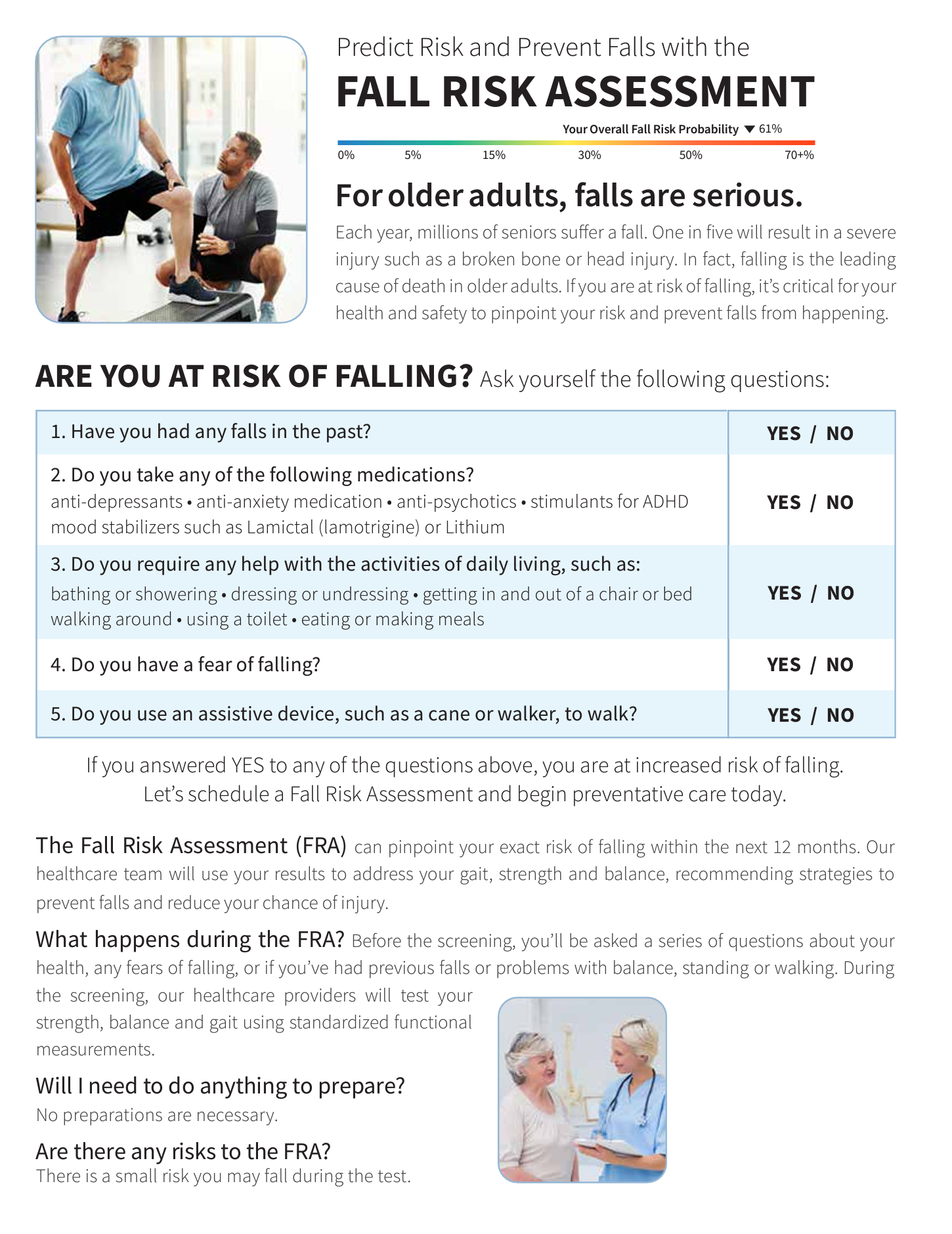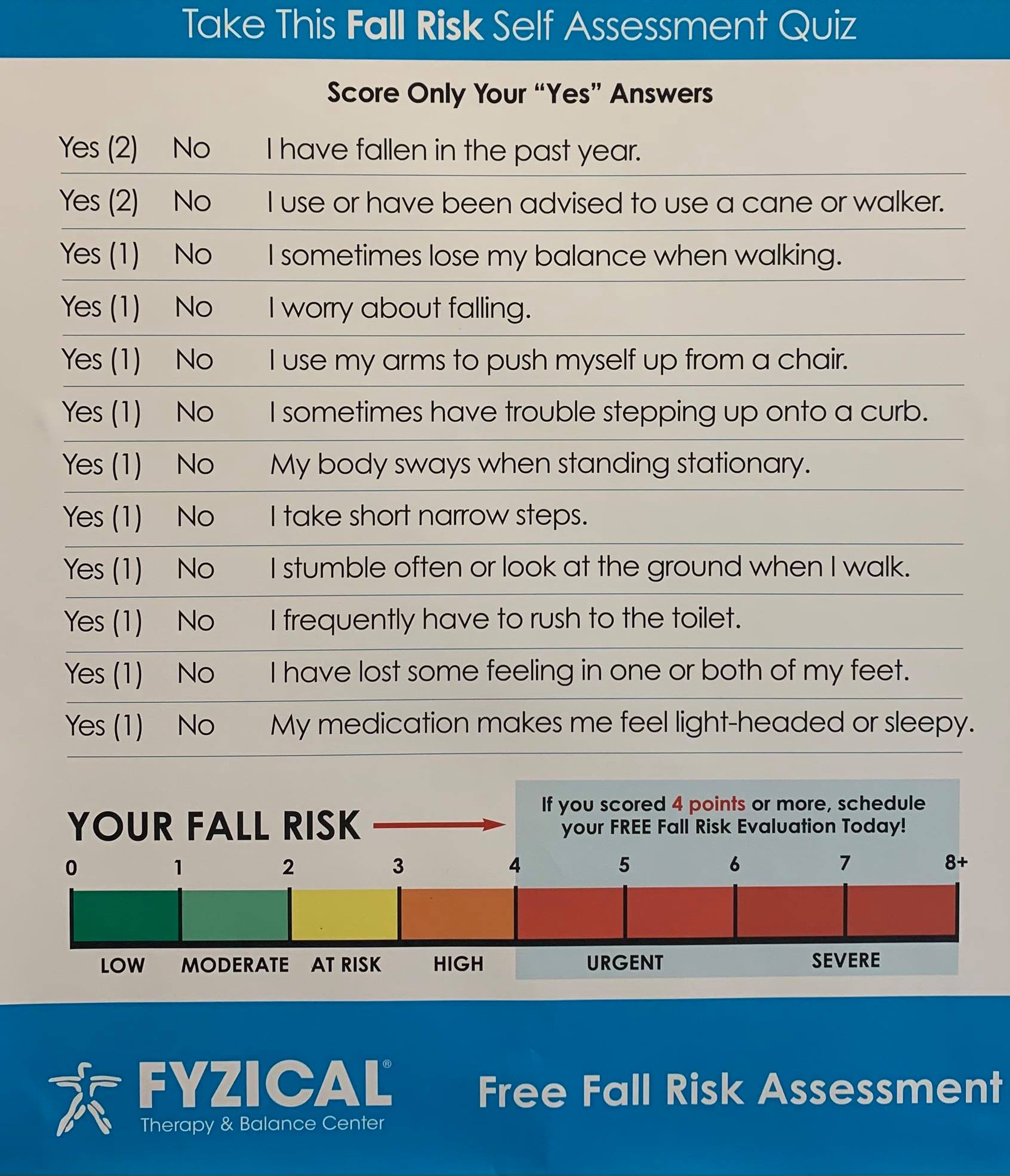What Does Dementia Fall Risk Do?
Table of ContentsThe smart Trick of Dementia Fall Risk That Nobody is Talking AboutSome Of Dementia Fall RiskThe Basic Principles Of Dementia Fall Risk Our Dementia Fall Risk DiariesAbout Dementia Fall Risk
The FRAT has 3 areas: drop threat standing, danger factor list, and activity strategy. A Fall Risk Condition includes data about background of recent falls, medicines, psychological and cognitive standing of the patient - Dementia Fall Risk.If the patient ratings on a risk variable, the corresponding number of points are counted to the patient's fall risk score in the box to the far. If a client's loss danger rating totals five or higher, the person is at high risk for drops. If the person scores only four points or lower, they are still at some threat of falling, and the registered nurse should use their ideal scientific assessment to take care of all fall danger aspects as component of an all natural care plan.
These typical techniques, in general, aid develop a secure setting that minimizes unintentional drops and delineates core preventative procedures for all clients. Indications are essential for patients at threat for falls.
Not known Facts About Dementia Fall Risk
Wristbands need to include the patient's last and very first name, date of birth, and NHS number in the UK. Just red color must be made use of to signify unique client condition.
Items that are as well much may call for the patient to connect or ambulate unnecessarily and can potentially be a threat or add to drops. Assists prevent the person from heading out of bed with no support. Registered nurses react to fallers' call lights faster than they do to lights started by non-fallers.
Visual disability can greatly cause falls. Hip pads, when used appropriately, might minimize a hip crack when autumn takes place. Maintaining the beds closer to the flooring lowers the danger of falls and significant injury. Putting the mattress on the floor significantly minimizes loss threat in some medical care settings. Low beds are created to decrease the distance an individual falls after moving out of bed.
The 10-Minute Rule for Dementia Fall Risk
Patients that are high and with weak leg muscular tissues that attempt to rest on the bed from a standing placement are likely to drop onto the bed because it's as well low for them to reduce themselves safely. Additionally, if a high client attempts to rise from a low bed without assistance, the individual is likely to drop back down onto the bed or miss the bed and fall onto the flooring.
They're developed to advertise prompt rescue, not to stop drops from bed. Audible alarms can also advise the person not to obtain up alone. The use of alarms can additionally be an alternative to physical restraints. Other than bed alarm systems, enhanced supervision for high-risk people likewise might help stop falls.

Clients with a shuffling stride increase autumn opportunities considerably. To minimize fall risk, shoes should be with a little to no heel, thin soles with slip-resistant walk, and sustain the ankle joints.
All about Dementia Fall Risk
In a study, homes with sufficient lights record less drops (Ramulu et al., 2021). Improvement in illumination at home might decrease loss rates in older adults.

Sitters work for assuring a safe and secure, protected, and secure atmosphere. However, researches demonstrated extremely low-certainty proof that sitters decrease autumn threat in acute treatment health centers and only moderate-certainty that alternatives like video tracking can reduce sitter use without enhancing loss risk, recommending that caretakers are not as valuable as originally thought (Greely et al., Discover More 2020).
Indicators on Dementia Fall Risk You Need To Know

Enhanced physical fitness minimizes the danger for falls and limits injury that is sustained when fall transpires. Land and water-based workout programs may be similarly valuable on equilibrium and gait and thus lower the risk for falls. Water workout might contribute a favorable benefit on balance and stride for women 65 years and older.
Chair Rise Workout is a basic sit-to-stand exercise that helps enhance the muscle mass in the thighs and buttocks and improves wheelchair and independence. The goal is to do Chair Rise exercises without using web hands as browse around these guys the customer becomes stronger. See resources area for an in-depth guideline on exactly how to carry out Chair Increase exercise.